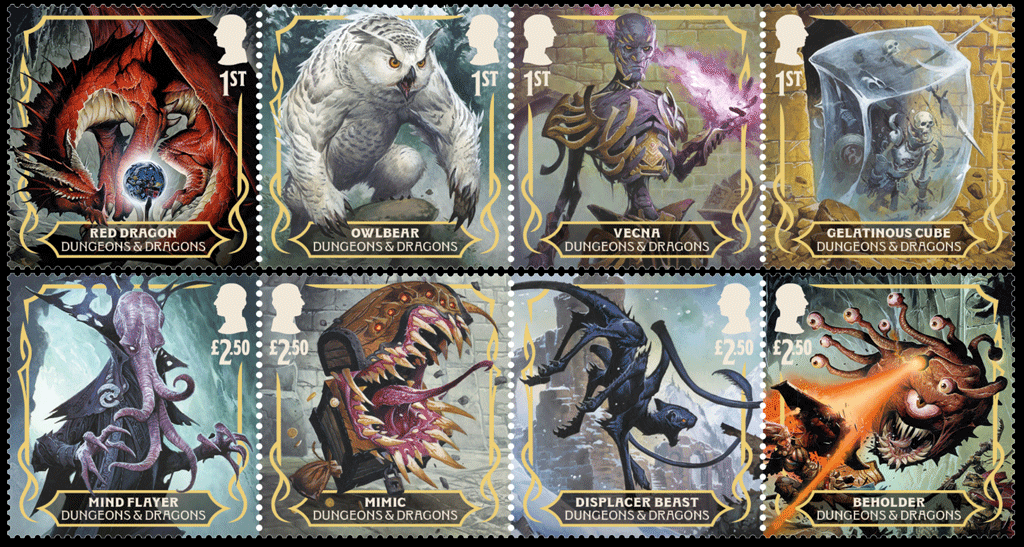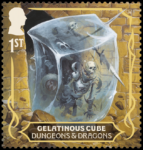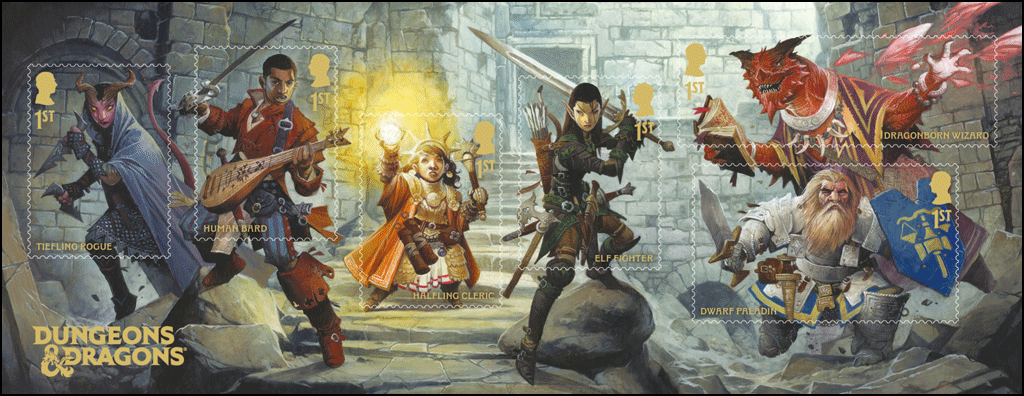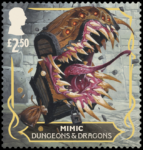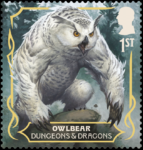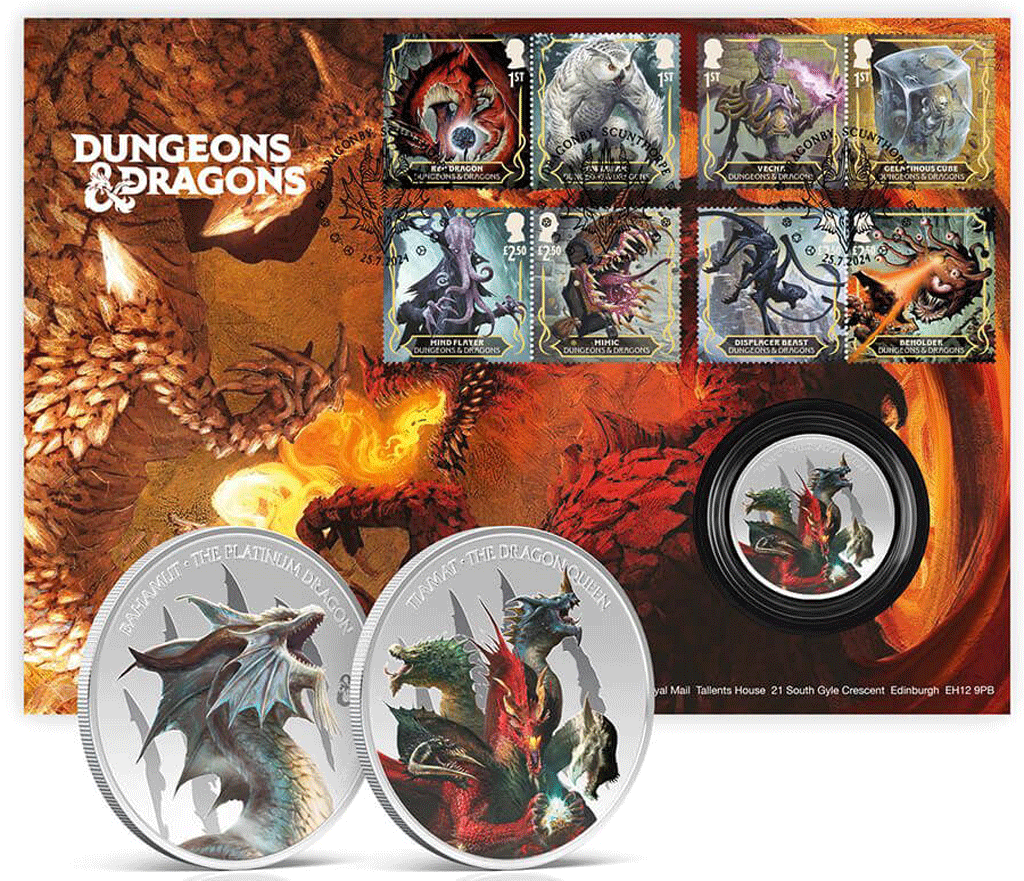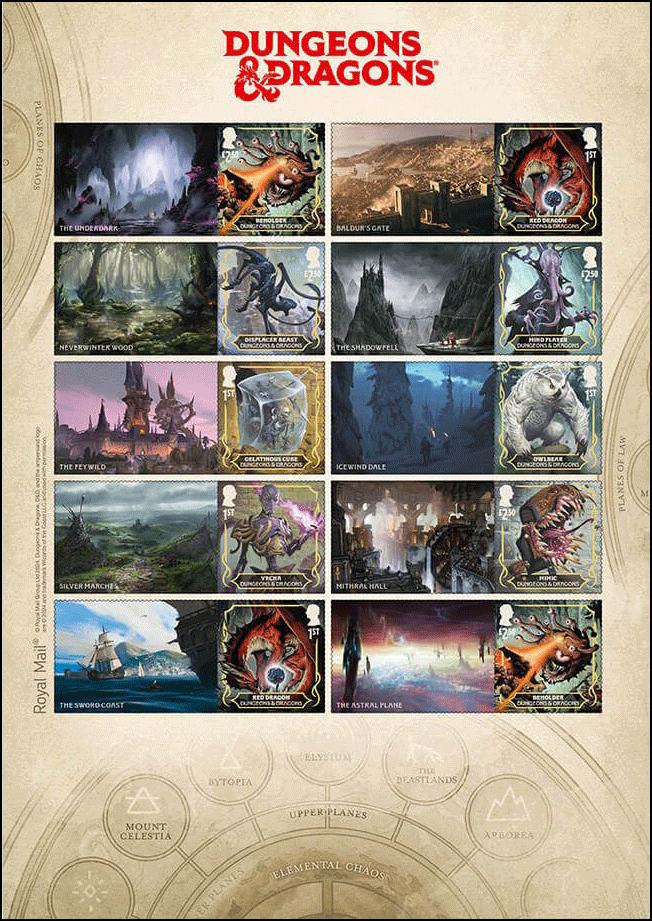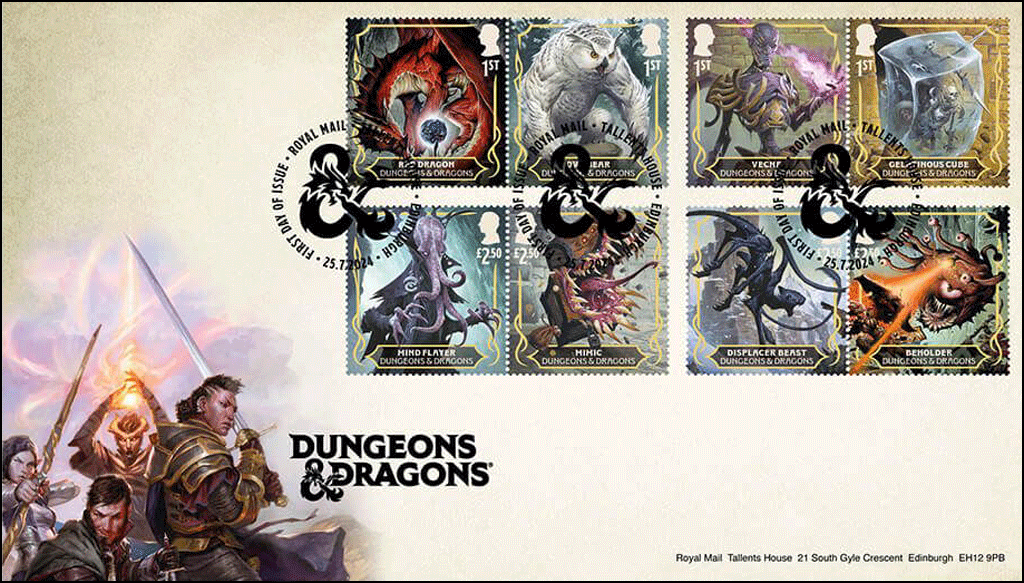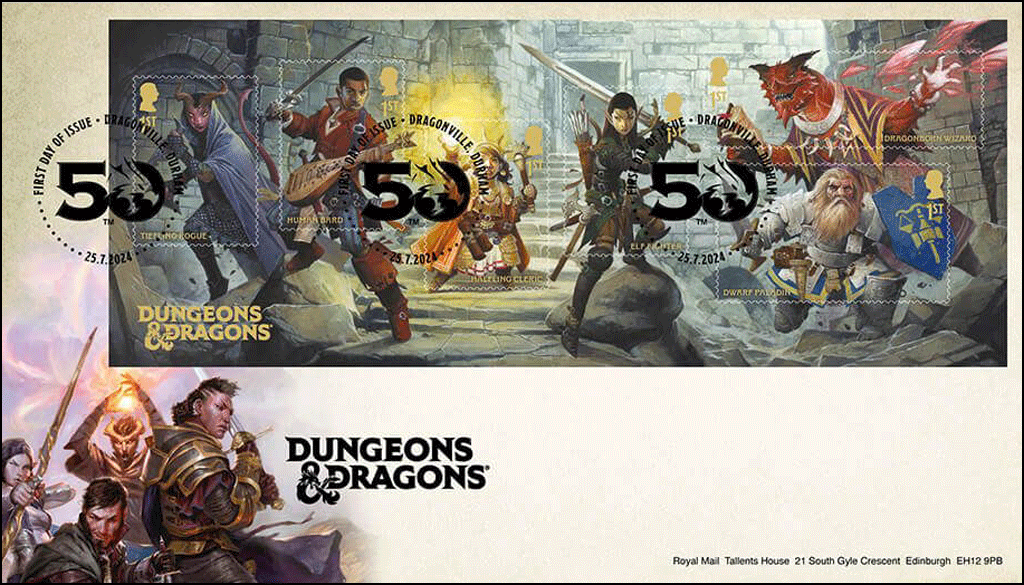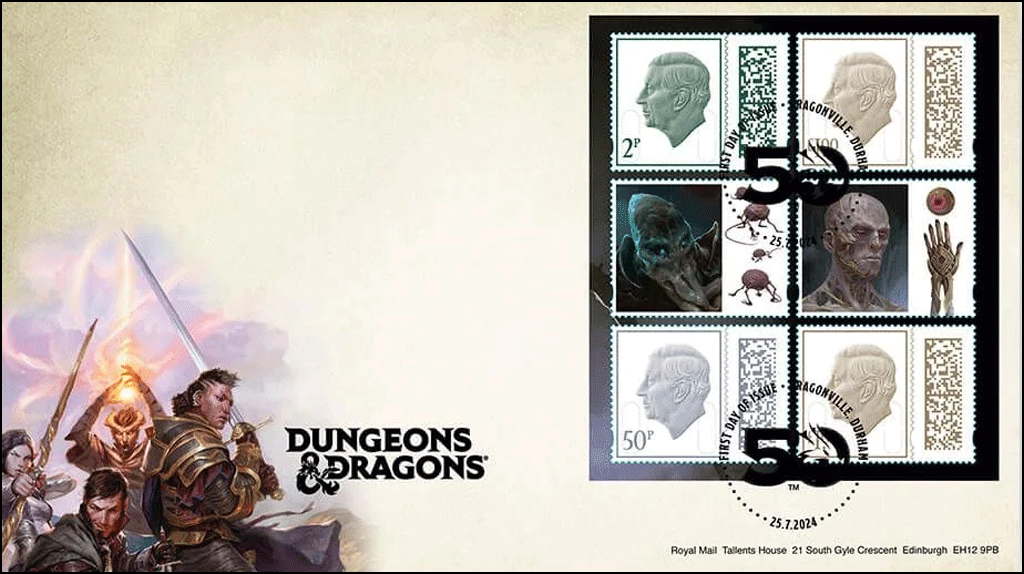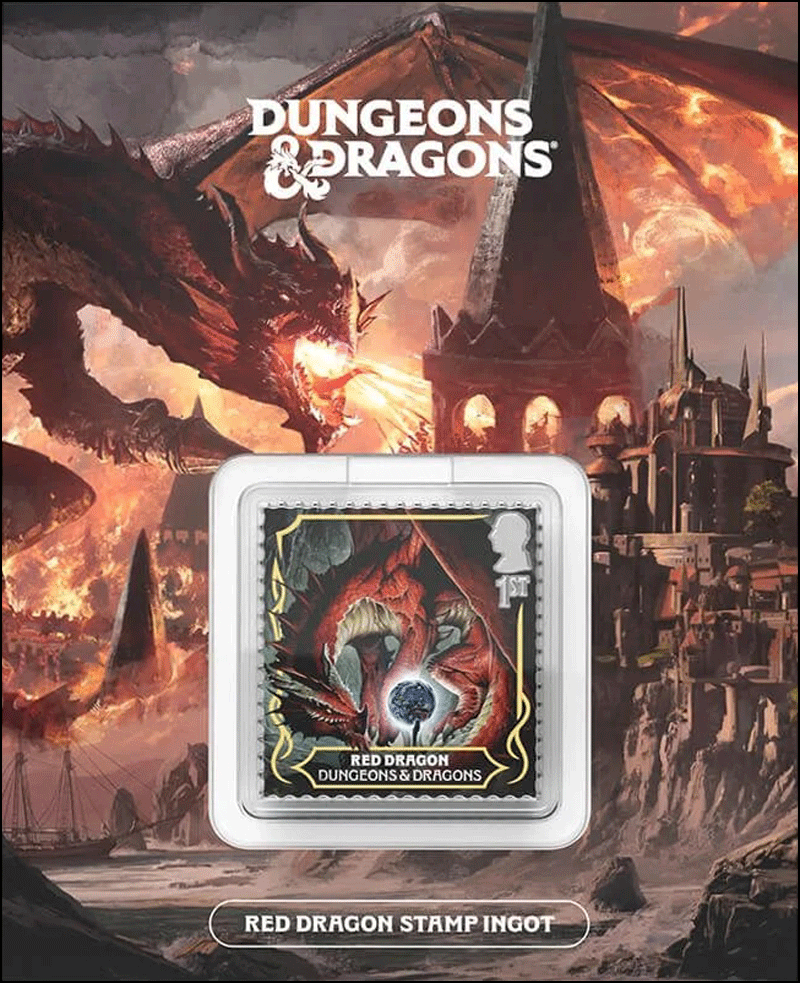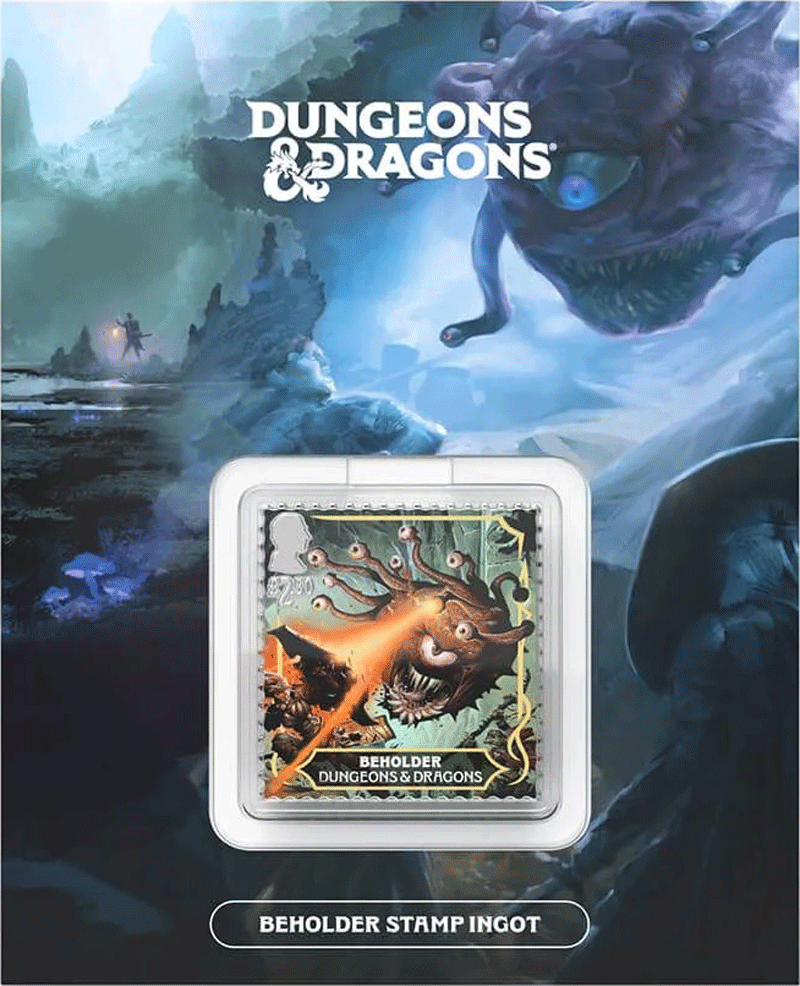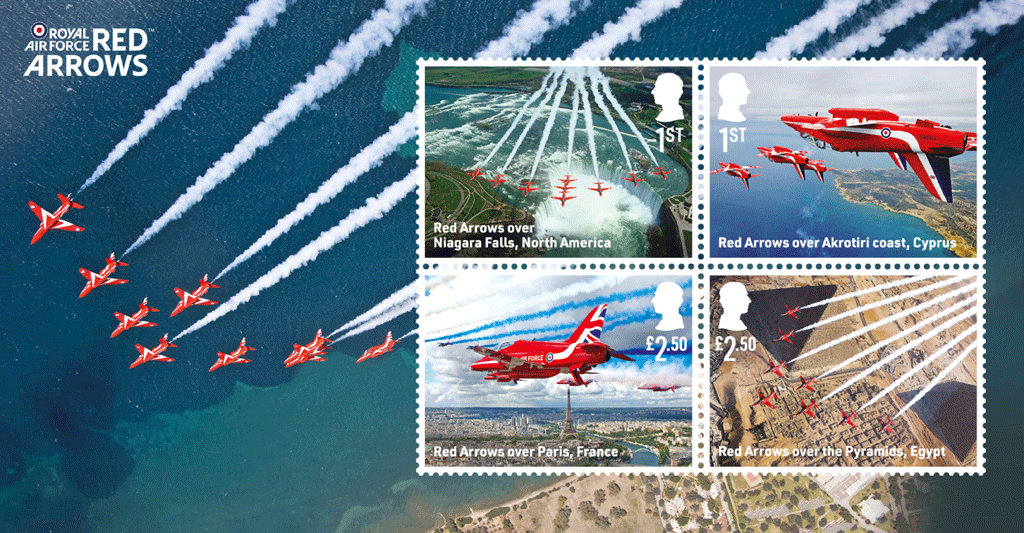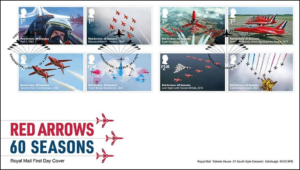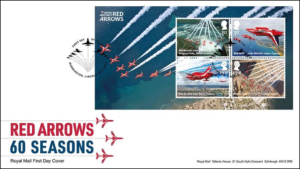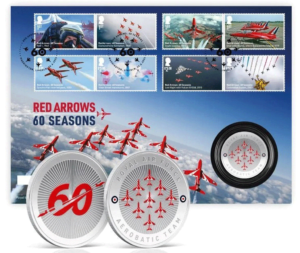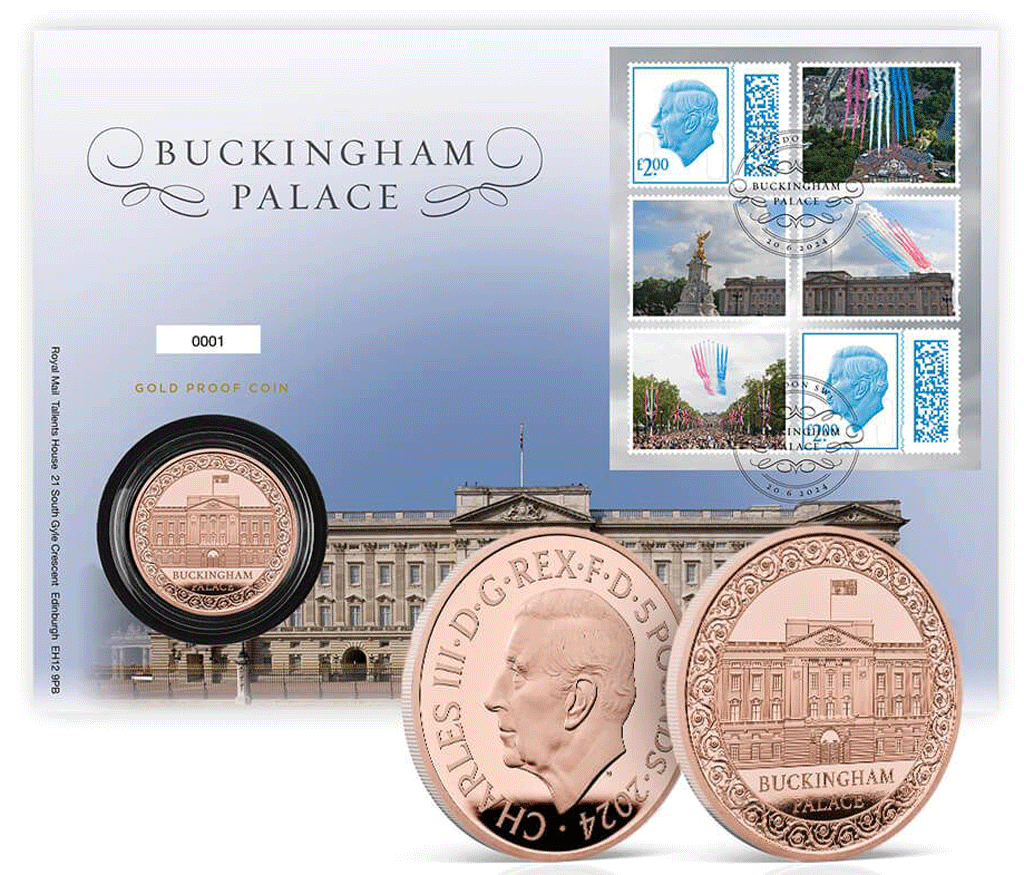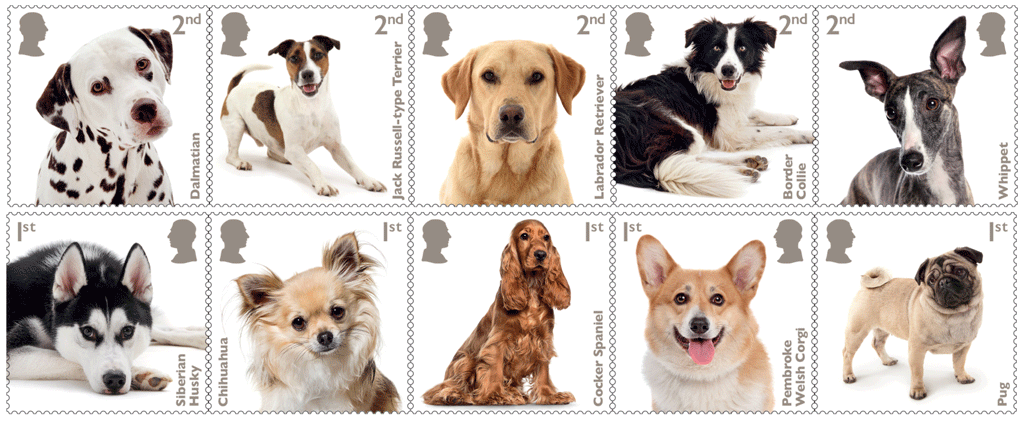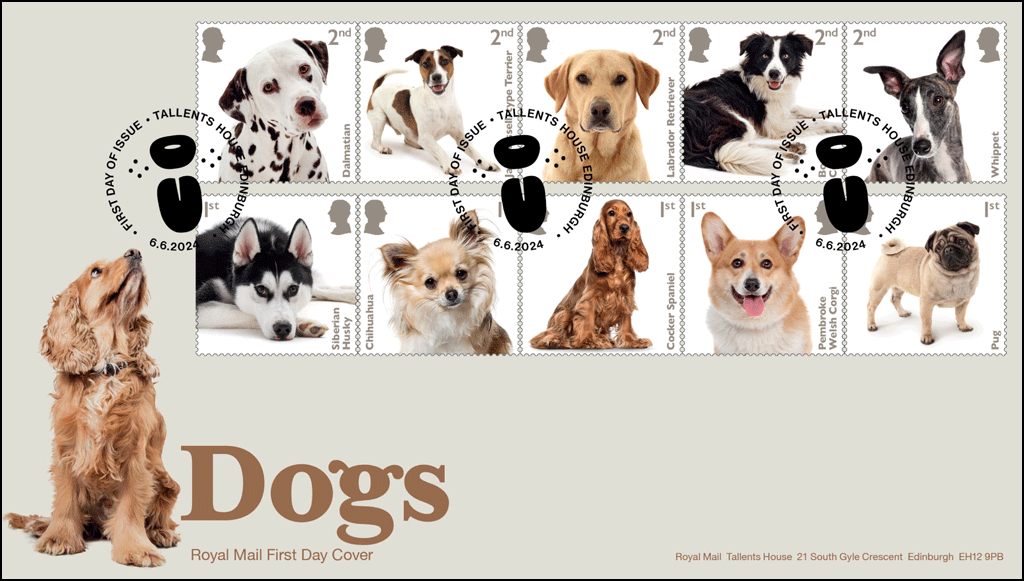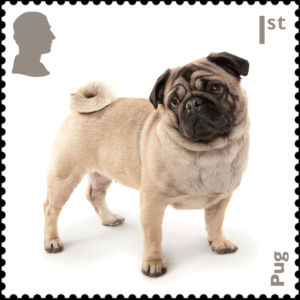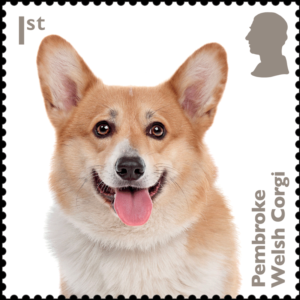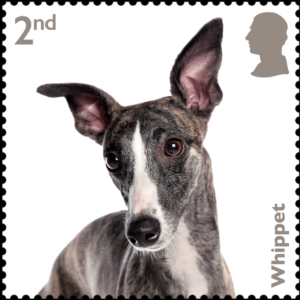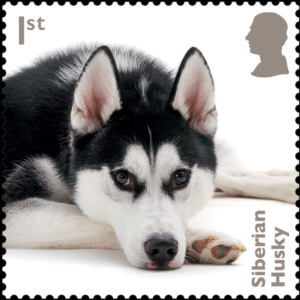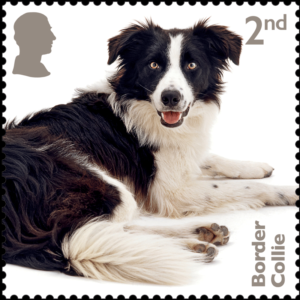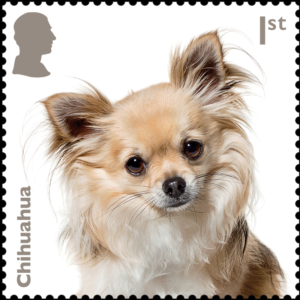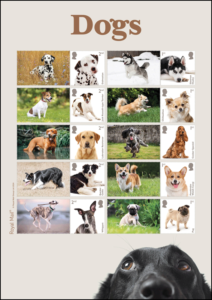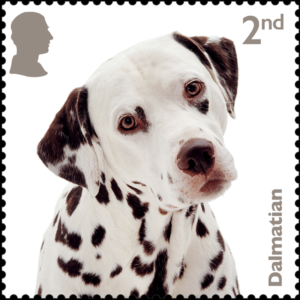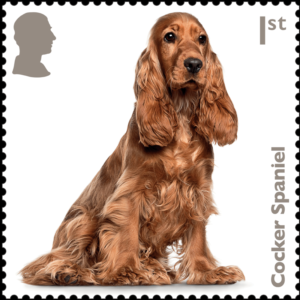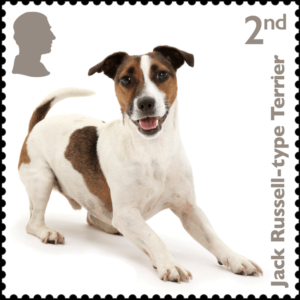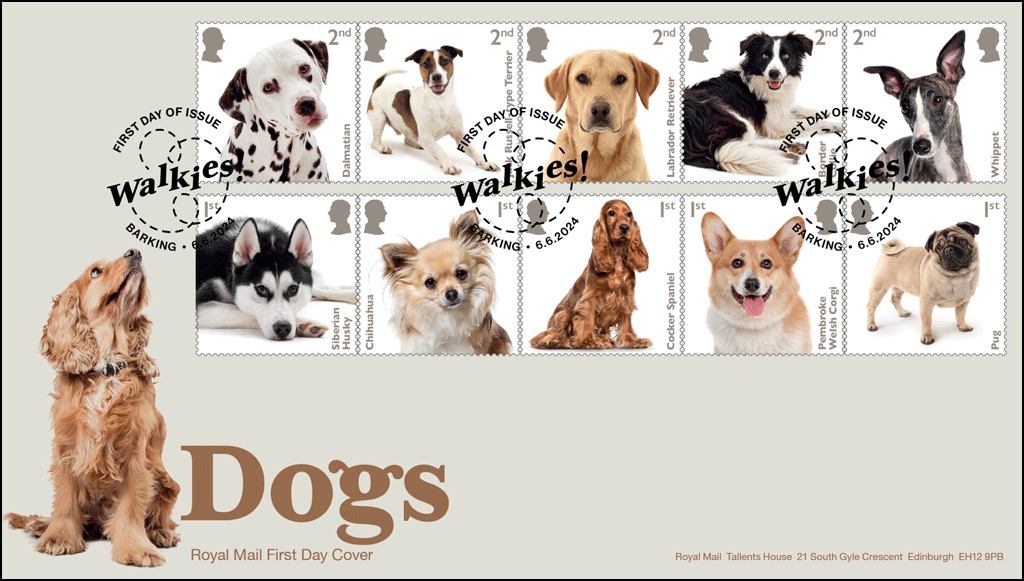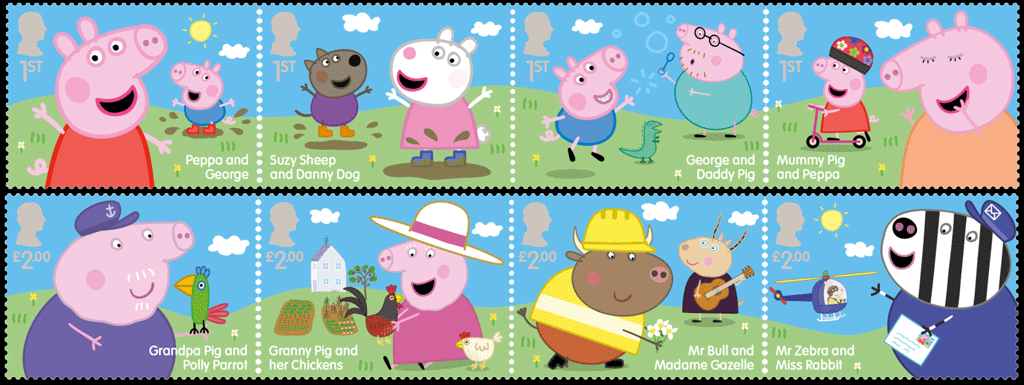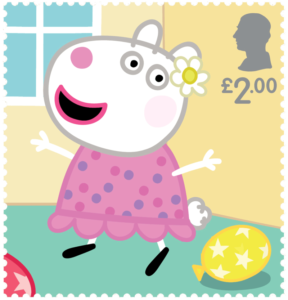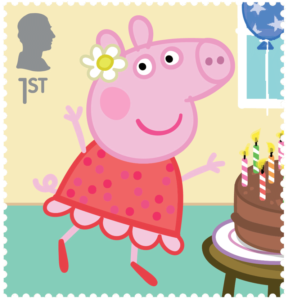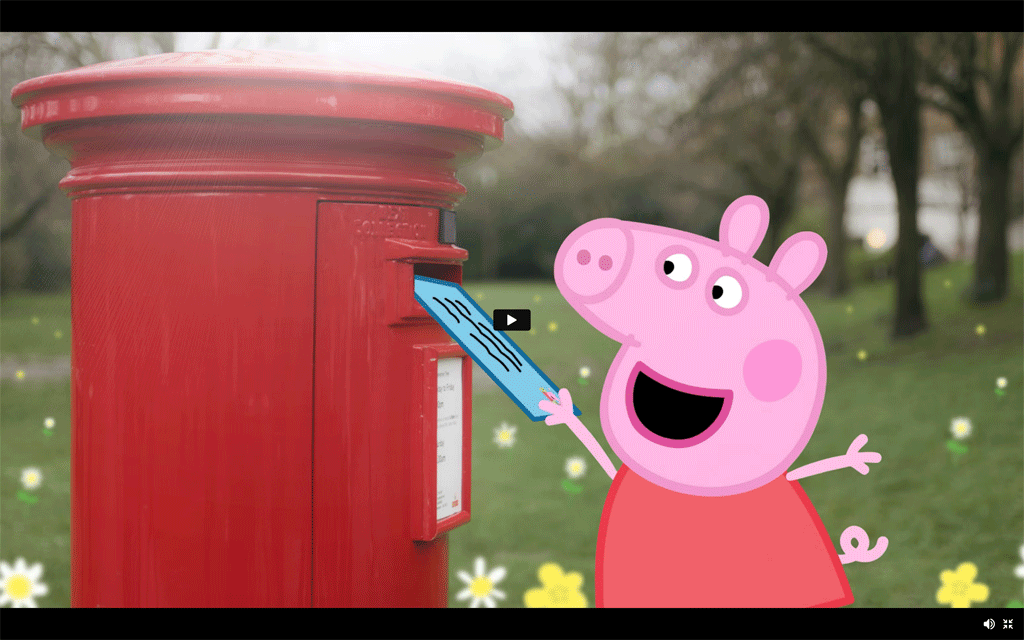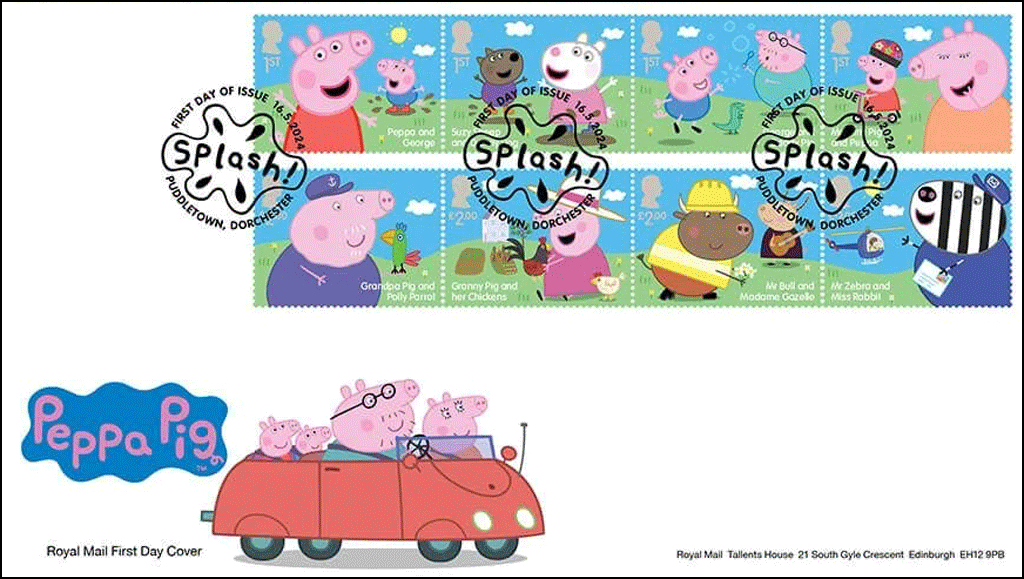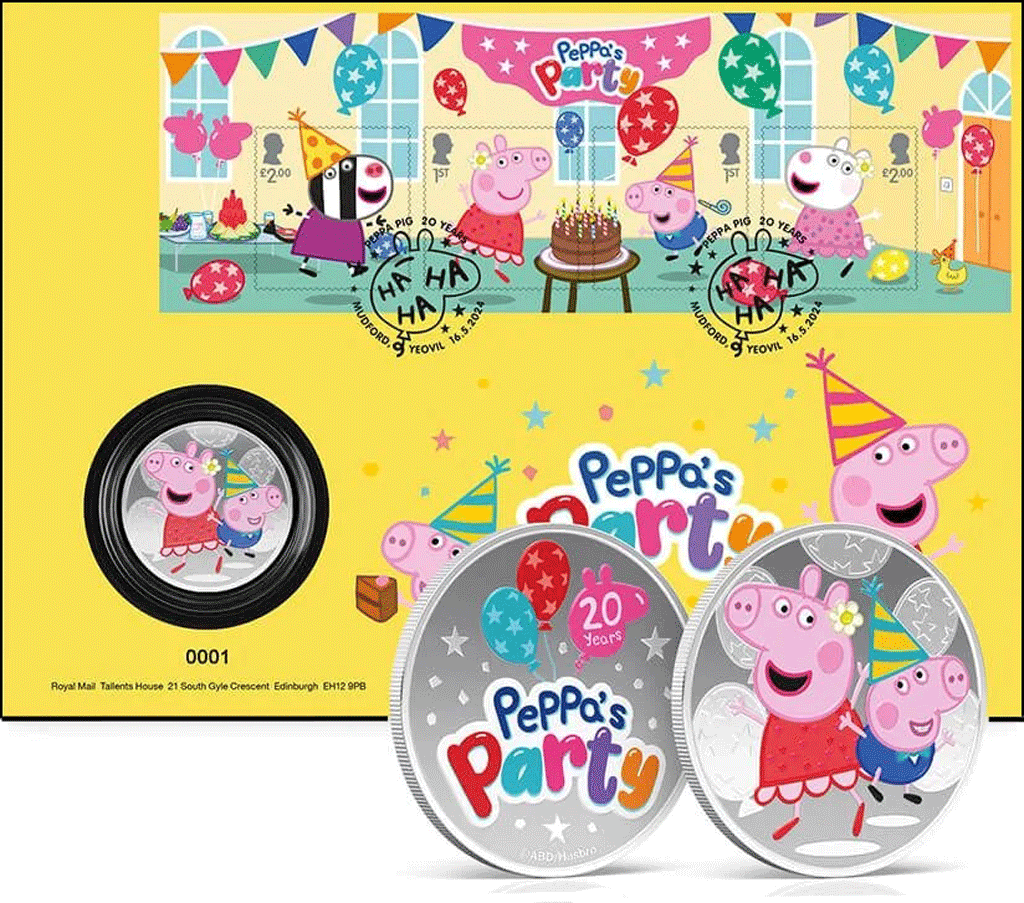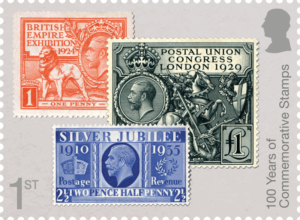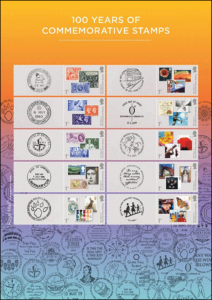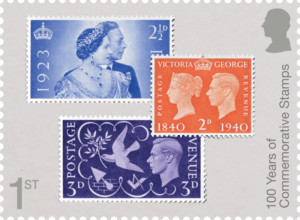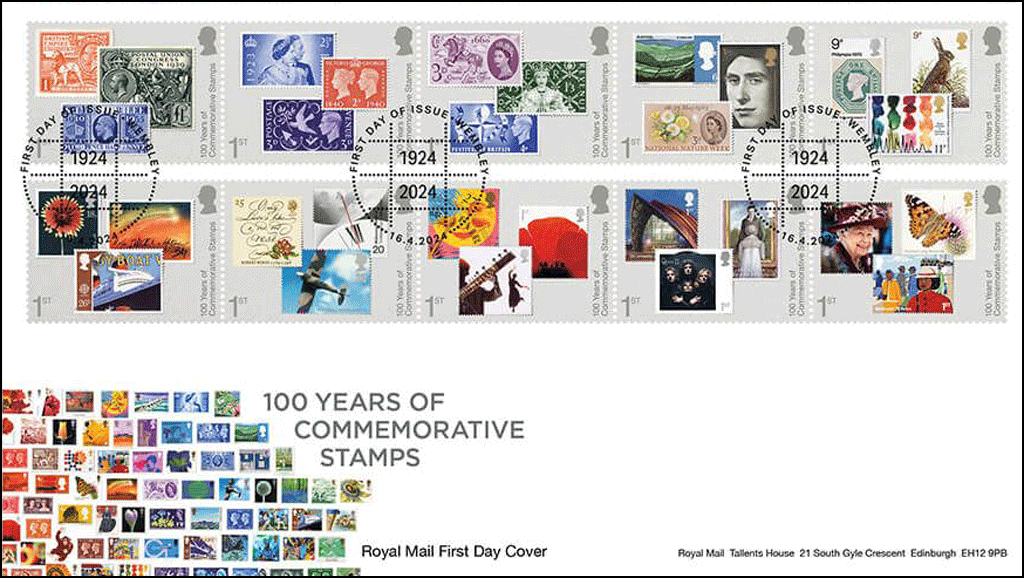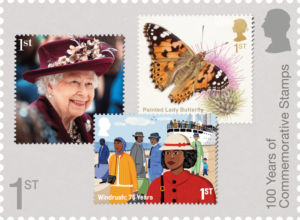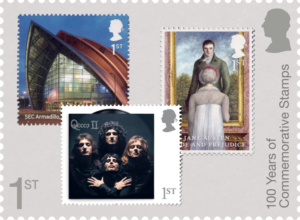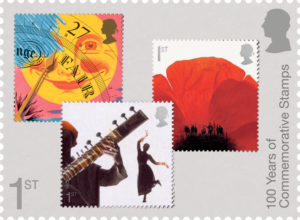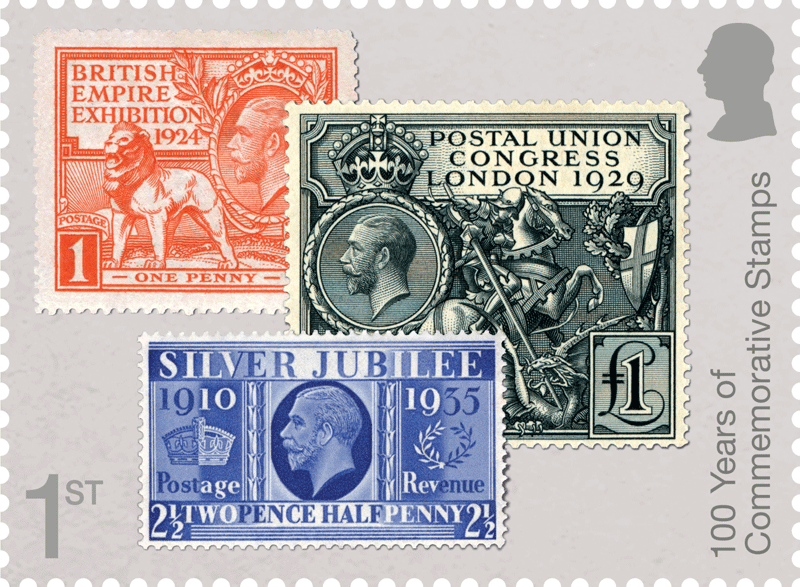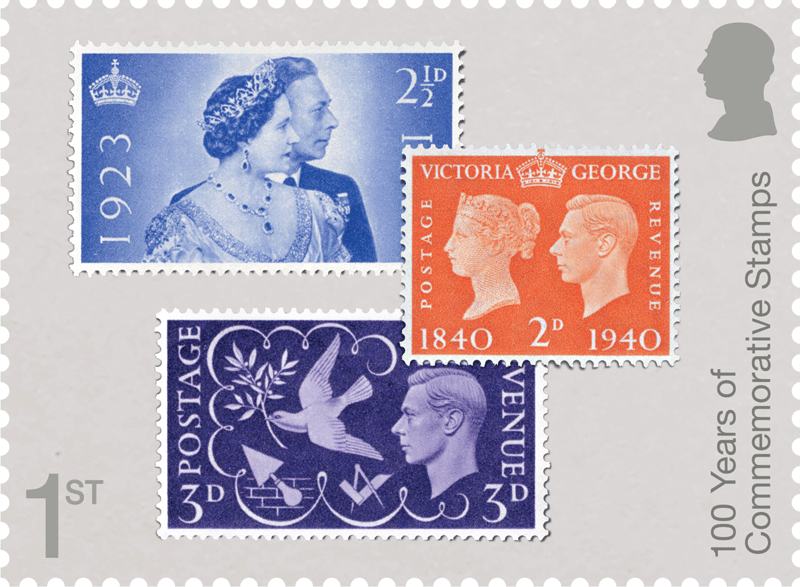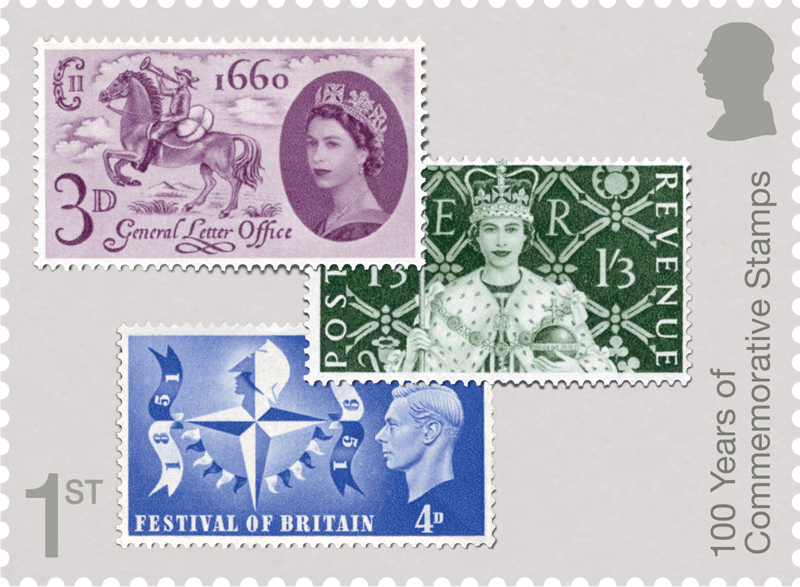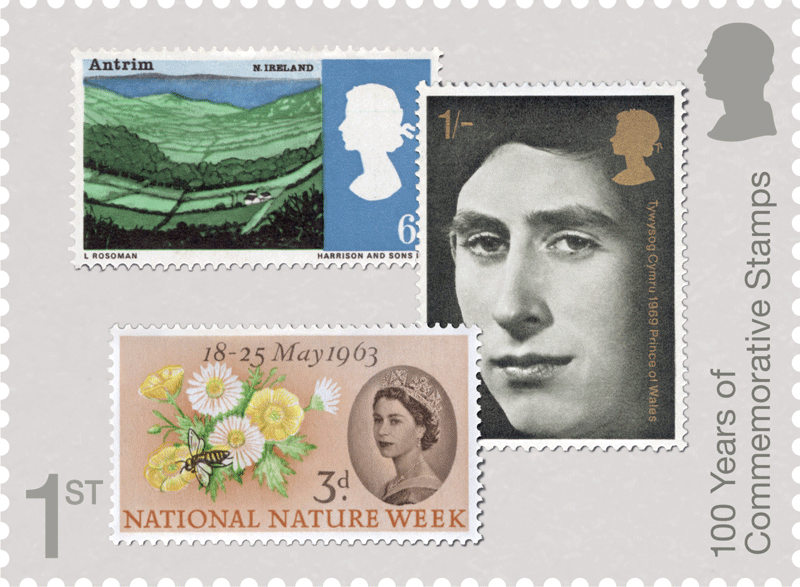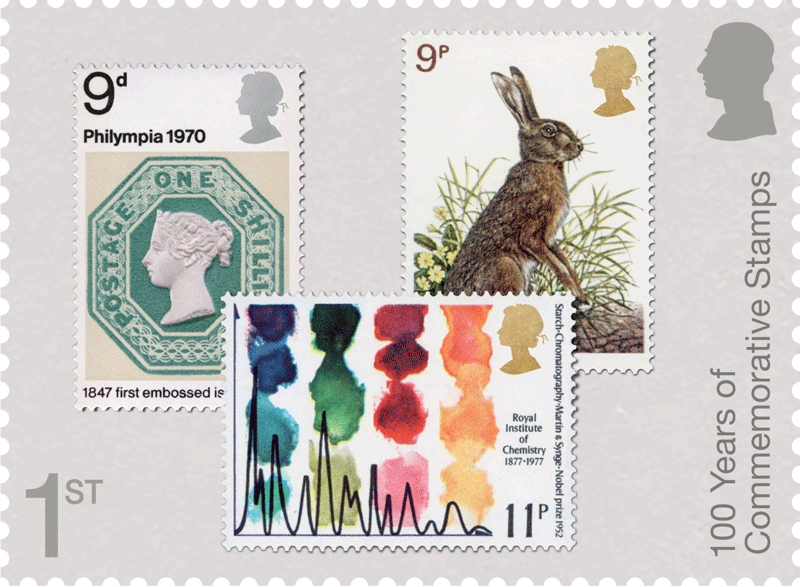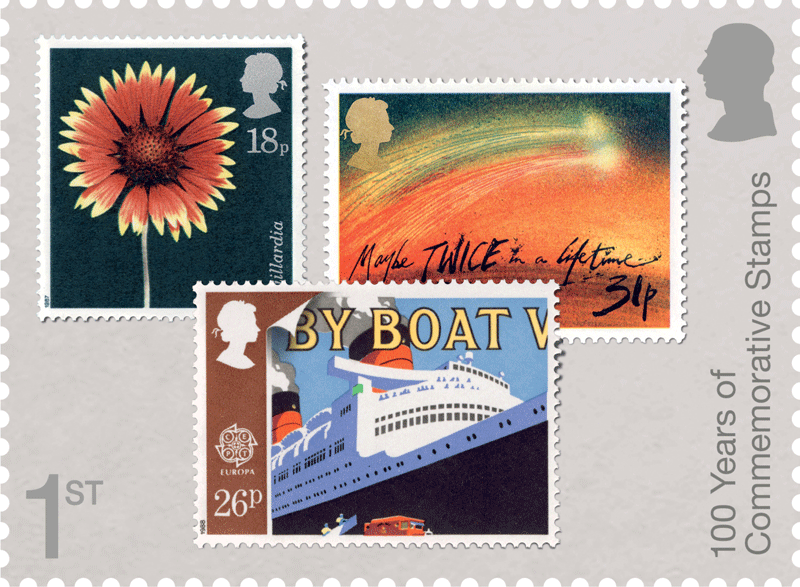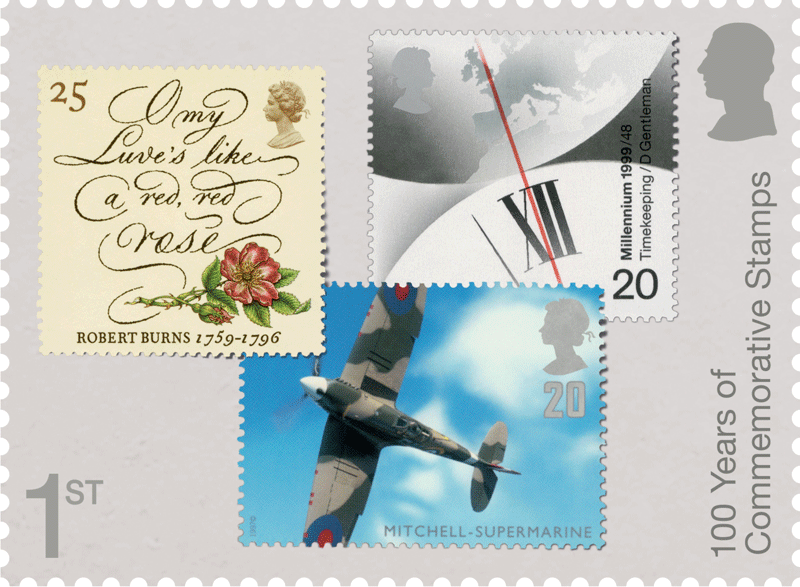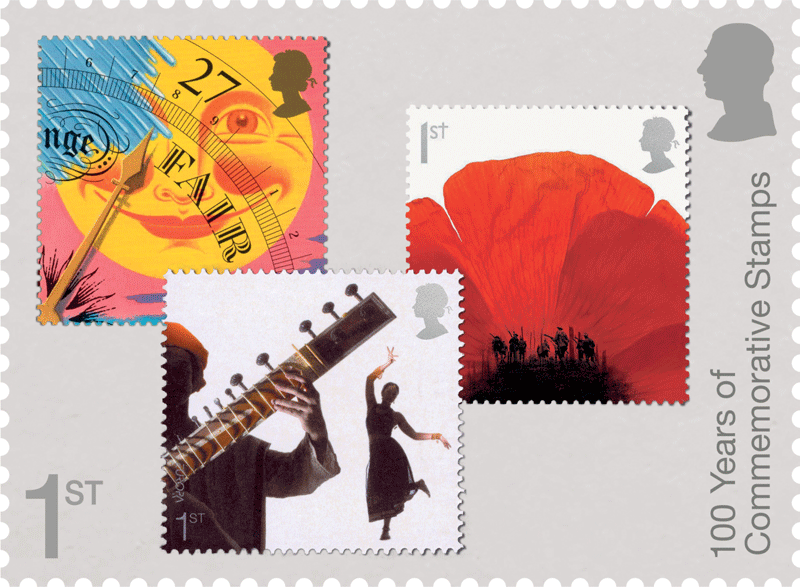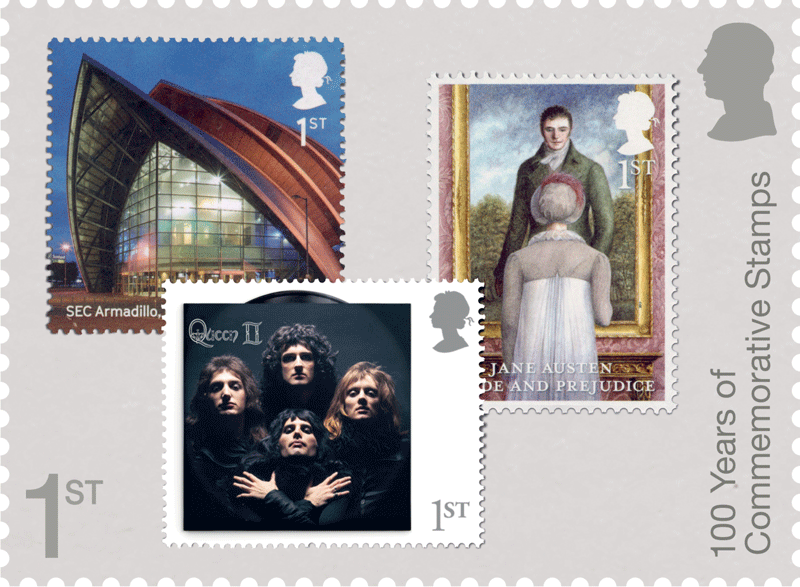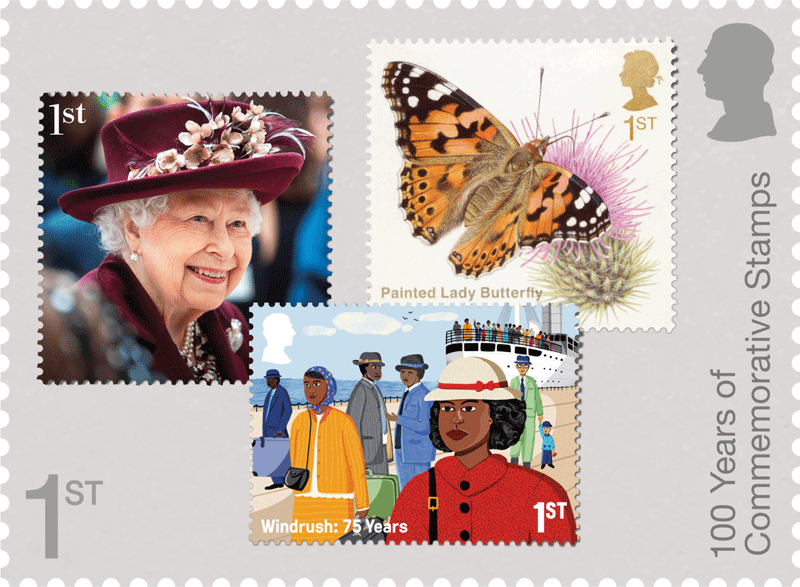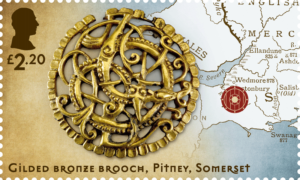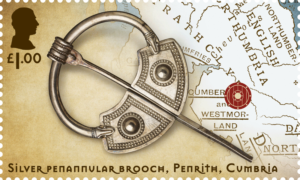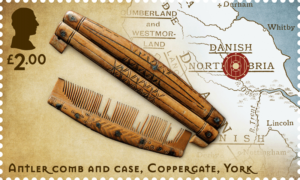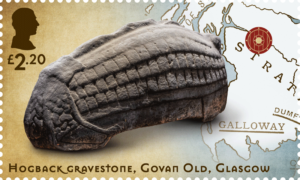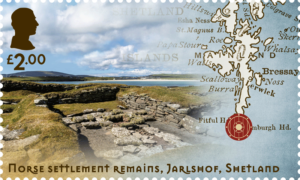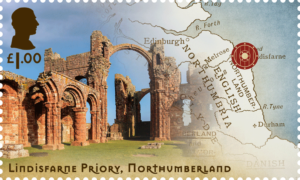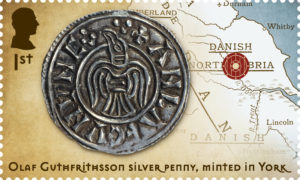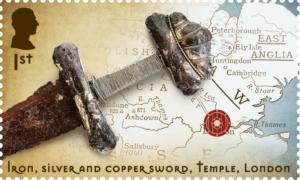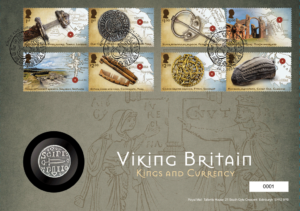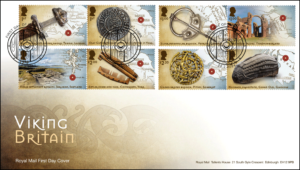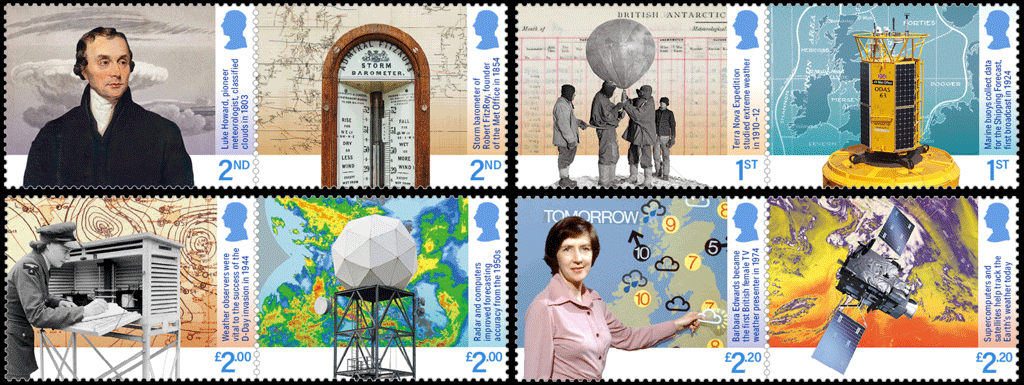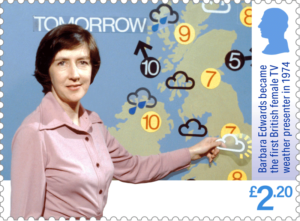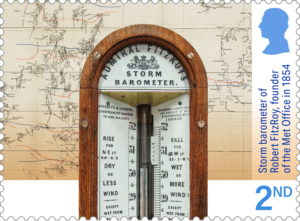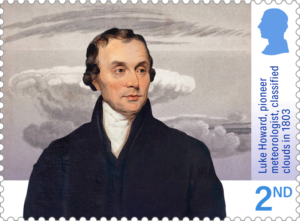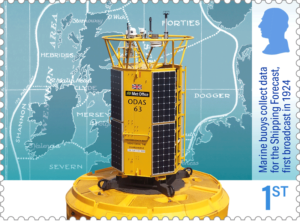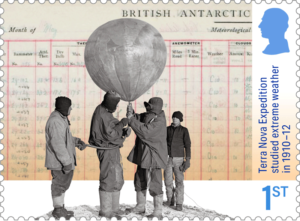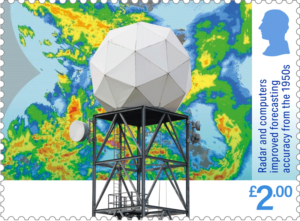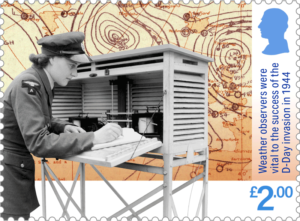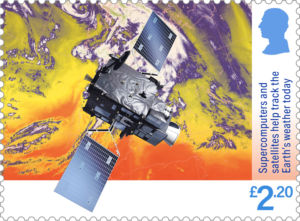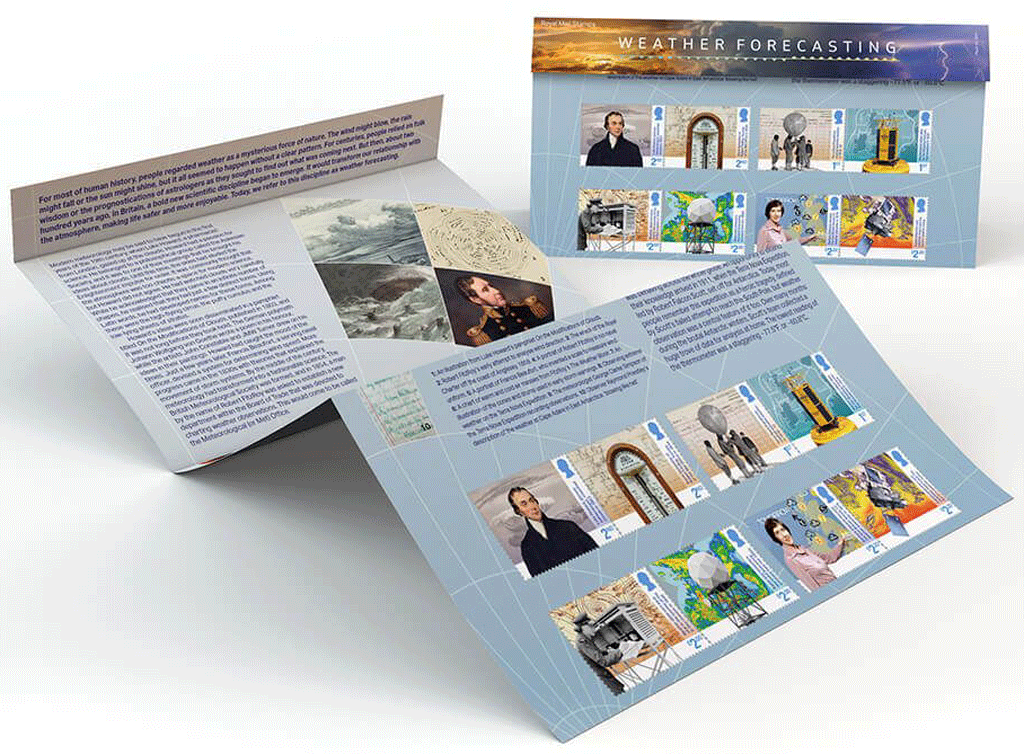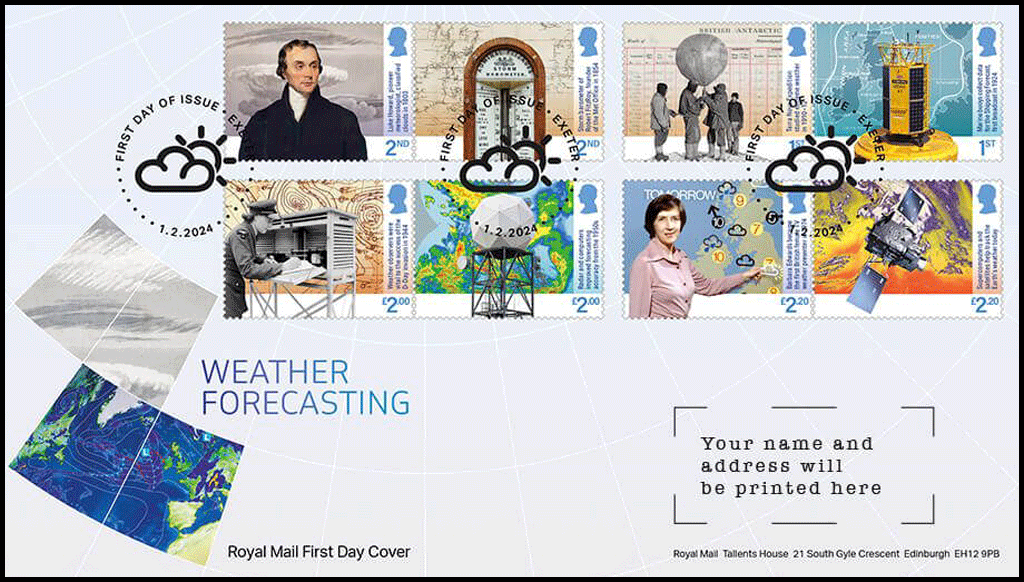[press release] [click on any of the pictures for larger versions]
Stunning New Special Stamps from Royal Mail Chart the Age Of The Dinosaurs
Issue date: 12 March
- The main set of stamps feature dynamic illustrations of different species of dinosaurs, including Tyrannosaurus, Stegosaurus and Diplodocus
- An additional four stamps, presented in a separate miniature sheet, pay tribute to Mary Anning, one of the greatest fossil hunters of the 19th century
- The stamps and a range of collectible products are available to pre-order now at www.royalmail.com/dinosaurs and by telephone on 03457 641641
Royal Mail has revealed images of eight new, stunning stamps that include dinosaurs and other prehistoric reptiles from the Jurassic and Cretaceous eras.
The new designs, by Exeter based, digital concept illustrator, Joshua Dunlop, combine scientific accuracy, provided by the Natural History Museum’s palaeontology department, with artistic brilliance in a captivating homage to the wonders of palaeontology, and include:
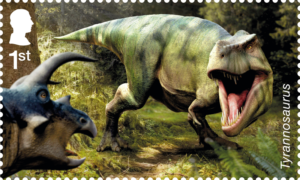 Tyrannosaurus
Tyrannosaurus- Triceratops
- Coloborhynchus
- Iguanodon
- Stegosaurus
- Diplodocus
- Megalosaurus
- Cryptoclidus
An additional sheet of four stamps recognises the contribution of palaeontologist Mary Anning. She was one of the first professional fossil hunters and her discoveries on the Dorset coast, near her home in Lyme Regis, paved the way for modern palaeontology and contributed to our understanding of prehistoric life on Earth.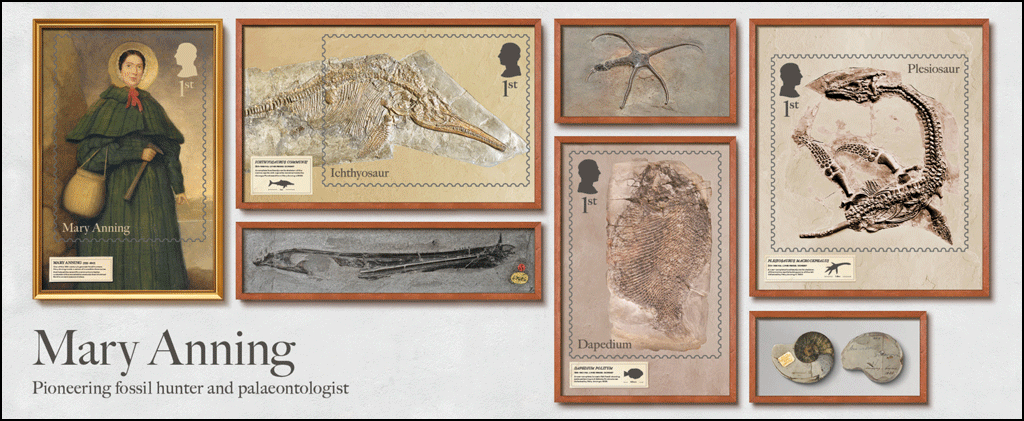
Royal Mail worked in collaboration with experts at the Natural History Museum, consulting with scientists specialising in various areas of palaeontology.
David Gold, Director of External Affairs and Policy said: “We were thrilled to feature incredible dinosaurs from the mighty Tyrannosaurus rex to graceful Diplodocus as well as 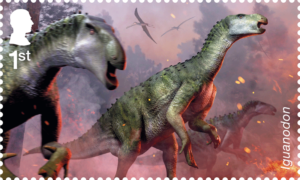 other fascinating prehistoric reptiles in their natural habitats. It is fitting in the week of International Women’s Day that we pay tribute to Mary Anning with four images of some of the fossils she discovered. She was one of the greatest fossil hunters of the 19th century, making a major contribution to our understanding of the majestic creatures that roamed the Earth hundreds of millions of years ago.”
other fascinating prehistoric reptiles in their natural habitats. It is fitting in the week of International Women’s Day that we pay tribute to Mary Anning with four images of some of the fossils she discovered. She was one of the greatest fossil hunters of the 19th century, making a major contribution to our understanding of the majestic creatures that roamed the Earth hundreds of millions of years ago.”
Maxine Lister, Head of Licensing at the Natural History Museum, said: “We were thrilled 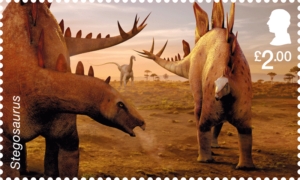 when Royal Mail approached us to collaborate on these brilliant sets of stamps. It’s perfect timing too, as we have just celebrated the 200th anniversary since the naming of the first dinosaur: the Megalosaurus, which features as part of this collection. Our mission is to create advocates for the planet and we hope these stunning designs inspire everyone to discover a bit more about our natural world, whether that be the creatures that lived here before us, or the pioneering figures who shaped our understanding of them today.”
when Royal Mail approached us to collaborate on these brilliant sets of stamps. It’s perfect timing too, as we have just celebrated the 200th anniversary since the naming of the first dinosaur: the Megalosaurus, which features as part of this collection. Our mission is to create advocates for the planet and we hope these stunning designs inspire everyone to discover a bit more about our natural world, whether that be the creatures that lived here before us, or the pioneering figures who shaped our understanding of them today.”
Age of the Dinosaurs
The Mesozoic Era, or the ‘Age of the Dinosaurs’ as it is commonly known, lasted from 252 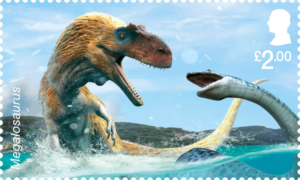 to 66 million years ago and comprises, in order from oldest to youngest, the Triassic, Jurassic and Cretaceous Periods. During most of this time, from the Late Triassic onwards, a group of reptiles known as dinosaurs dominated the land. Other non-dinosaur reptiles also thrived during this period, including marine reptiles, such as ichthyosaurs and plesiosaurs, as well as the flying pterosaurs.
to 66 million years ago and comprises, in order from oldest to youngest, the Triassic, Jurassic and Cretaceous Periods. During most of this time, from the Late Triassic onwards, a group of reptiles known as dinosaurs dominated the land. Other non-dinosaur reptiles also thrived during this period, including marine reptiles, such as ichthyosaurs and plesiosaurs, as well as the flying pterosaurs.
Fossilised remains help us to unearth the secrets of these incredible creatures, and one of the greatest fossil hunters of the 19th century was Mary Anning. Anning lived during a time 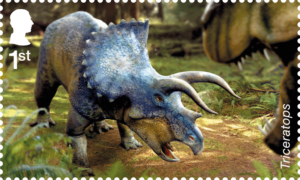 when it was fashionable for wealthy Georgians to visit seaside towns to acquire fossils to add to their cabinets of curiosities. It was also when palaeontology was becoming recognised as a branch of the natural sciences. Anning spent her life unearthing ‘curios’ from the fossil-rich cliffs near her home in Lyme Regis, Dorset, to sell to tourists and scientific collectors alike, and made many important discoveries. A fascination with prehistoric life continues today. Palaeontologists study all fossilised past life, including corals, fishes, mammals and plants, in addition to prehistoric reptiles. Fossils can help us not only to learn about the lives of these species, but to understand what the Earth was like in the past.
when it was fashionable for wealthy Georgians to visit seaside towns to acquire fossils to add to their cabinets of curiosities. It was also when palaeontology was becoming recognised as a branch of the natural sciences. Anning spent her life unearthing ‘curios’ from the fossil-rich cliffs near her home in Lyme Regis, Dorset, to sell to tourists and scientific collectors alike, and made many important discoveries. A fascination with prehistoric life continues today. Palaeontologists study all fossilised past life, including corals, fishes, mammals and plants, in addition to prehistoric reptiles. Fossils can help us not only to learn about the lives of these species, but to understand what the Earth was like in the past.
Stamp By Stamp:
 Tyrannosaurus was a fierce predator that belonged to a group of dinosaurs known as theropods. One of the largest meat-eating animals ever to live on land, Tyrannosaurus lived during the Late Cretaceous period between 68 and 66 million years ago. The first known specimen was discovered in 1900 in Wyoming, USA.
Tyrannosaurus was a fierce predator that belonged to a group of dinosaurs known as theropods. One of the largest meat-eating animals ever to live on land, Tyrannosaurus lived during the Late Cretaceous period between 68 and 66 million years ago. The first known specimen was discovered in 1900 in Wyoming, USA.
 Triceratops was one of the biggest horned dinosaurs. It lived around 68 million years ago during the Late Cretaceous period, alongside the likes of Tyrannosaurus. Triceratops weighed about 5 tonnes and measured up to 9m in length – its head alone was about as long as a person. It had a curved, bony frill jutting out over its neck and a hard beak at the end of its nose. The word Triceratops means ‘three-horned face’ – a reference to its impressive horns, which may have been used in defence against large meat eaters.
Triceratops was one of the biggest horned dinosaurs. It lived around 68 million years ago during the Late Cretaceous period, alongside the likes of Tyrannosaurus. Triceratops weighed about 5 tonnes and measured up to 9m in length – its head alone was about as long as a person. It had a curved, bony frill jutting out over its neck and a hard beak at the end of its nose. The word Triceratops means ‘three-horned face’ – a reference to its impressive horns, which may have been used in defence against large meat eaters.
 Coloborhynchus was a type of pterosaur, a group of extinct flying reptiles that lived alongside the dinosaurs during the Mesozoic Era. Pterosaurs were the first vertebrates to achieve flight over 220 million years ago and included the largest flying creatures of all time. Coloborhynchus lived during the Early Cretaceous period and was one of the earliest pterosaurs to be discovered.
Coloborhynchus was a type of pterosaur, a group of extinct flying reptiles that lived alongside the dinosaurs during the Mesozoic Era. Pterosaurs were the first vertebrates to achieve flight over 220 million years ago and included the largest flying creatures of all time. Coloborhynchus lived during the Early Cretaceous period and was one of the earliest pterosaurs to be discovered.
 Iguanodon was a large ornithopod that lived during the Early Cretaceous period between 125 and 110 million years ago. Reaching a length of about 10m, it was a very large dinosaur – longer than both Triceratops and Stegosaurus – and a herbivore that probably ate around 30kg of plants every day. It is thought that Iguanodon probably walked on both two and four legs. It was one of the most successful dinosaurs, with remains having been found in many parts of Europe. Iguanodon had a large thumb spike, which was probably used to fend off predators. It also had a very long finger that it used to gather food.
Iguanodon was a large ornithopod that lived during the Early Cretaceous period between 125 and 110 million years ago. Reaching a length of about 10m, it was a very large dinosaur – longer than both Triceratops and Stegosaurus – and a herbivore that probably ate around 30kg of plants every day. It is thought that Iguanodon probably walked on both two and four legs. It was one of the most successful dinosaurs, with remains having been found in many parts of Europe. Iguanodon had a large thumb spike, which was probably used to fend off predators. It also had a very long finger that it used to gather food.
 Stegosaurus belongs to a group of dinosaurs known as stegosaurs, which are defined by the bony armour plates or spines that extend along the back in two parallel rows. Despite being one of the most recognisable dinosaurs, we know relatively little about it, as remains of Stegosaurus are rare.
Stegosaurus belongs to a group of dinosaurs known as stegosaurs, which are defined by the bony armour plates or spines that extend along the back in two parallel rows. Despite being one of the most recognisable dinosaurs, we know relatively little about it, as remains of Stegosaurus are rare.
 One of the longest dinosaurs ever to have existed, Diplodocuswas a long-necked prehistoric creature belonging to a group of dinosaurs called sauropods. It lived 150 million years ago at the end of the Jurassic Period. Reaching up to 27m in length, Diplodocus was a giant, weighing around 20 tonnes – as much as three male African elephants. It may have used its long neck to reach the tops of tall trees and its comb-like teeth to rake leaves into its mouth.
One of the longest dinosaurs ever to have existed, Diplodocuswas a long-necked prehistoric creature belonging to a group of dinosaurs called sauropods. It lived 150 million years ago at the end of the Jurassic Period. Reaching up to 27m in length, Diplodocus was a giant, weighing around 20 tonnes – as much as three male African elephants. It may have used its long neck to reach the tops of tall trees and its comb-like teeth to rake leaves into its mouth.
Megalosaurus was one of three species (along with Iguanodonand Hylaeosaurus) that led palaeontologist and anatomist Sir Richard Owen to coin the term ‘Dinosauria’ back in  1842, when he realised that all three creatures shared common characteristics and were their own distinct group of reptiles. His paper sparked a fascination with dinosaurs that continues today. It was William Buckland, a clergyman and palaeontologist, who, in 1824, named the creature Megalosaurus, which means ‘great lizard’. This was the first scientific description ever produced of what became known as a dinosaur. Megalosaurus was a large theropod that roamed what is now England during the Middle Jurassic period between 170 and 155 million years ago. Growing up to 9m long, it was one of the largest predators of the Middle Jurassic.
1842, when he realised that all three creatures shared common characteristics and were their own distinct group of reptiles. His paper sparked a fascination with dinosaurs that continues today. It was William Buckland, a clergyman and palaeontologist, who, in 1824, named the creature Megalosaurus, which means ‘great lizard’. This was the first scientific description ever produced of what became known as a dinosaur. Megalosaurus was a large theropod that roamed what is now England during the Middle Jurassic period between 170 and 155 million years ago. Growing up to 9m long, it was one of the largest predators of the Middle Jurassic.
Cryptoclidus was a type of plesiosaur – a group of extinct marine reptiles that existed from the Middle Triassic to the Late Cretaceous periods. Some species reached 15m in length,  although most were between 3m and 5m long. Plesiosaurs have been described as looking like a ‘snake threaded through a turtle’. Their limbs were large, well-developed paddles and it is thought that Cryptoclidus flapped these up and down in a similar way to a turtle. Plesiosaurs would have been found across the world, including in what is now Argentina, USA, Australia, France, Germany, China and Morocco. Many fossils have been found of Cryptoclidus, particularly from the Oxford Clay Formation in the UK, making it one of the best understood of all plesiosaurs.
although most were between 3m and 5m long. Plesiosaurs have been described as looking like a ‘snake threaded through a turtle’. Their limbs were large, well-developed paddles and it is thought that Cryptoclidus flapped these up and down in a similar way to a turtle. Plesiosaurs would have been found across the world, including in what is now Argentina, USA, Australia, France, Germany, China and Morocco. Many fossils have been found of Cryptoclidus, particularly from the Oxford Clay Formation in the UK, making it one of the best understood of all plesiosaurs.
On the souvenir sheet:
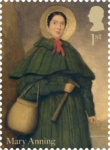 One of the 19th century’s greatest fossil hunters, Mary Anning made a series of incredible discoveries that helped the scientific community to better understand the remarkable creatures that inhabited Earth’s ancient seas and skies.
One of the 19th century’s greatest fossil hunters, Mary Anning made a series of incredible discoveries that helped the scientific community to better understand the remarkable creatures that inhabited Earth’s ancient seas and skies.
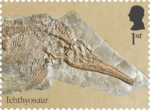 Ichthyosaurus Communis 201–198 Ma, Lyme Regis, Dorset — A complete fossilised juvenile skeleton of the marine reptile with coprolite remains inside the rib cage. Purchased from Mary Anning c.1835.
Ichthyosaurus Communis 201–198 Ma, Lyme Regis, Dorset — A complete fossilised juvenile skeleton of the marine reptile with coprolite remains inside the rib cage. Purchased from Mary Anning c.1835.
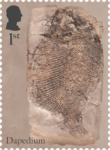 Dapedium Politum 199–190 Ma, Lyme Regis, Dorset —
Dapedium Politum 199–190 Ma, Lyme Regis, Dorset —
A near-complete Jurassic fish fossil, showing scale patterning and delicate fin structures. Collected by Mary Anning c.1829.
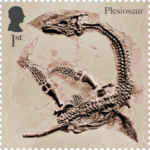 Plesiosaurus Macrocephalus 201–198 Ma, Lyme Regis, Dorset —
Plesiosaurus Macrocephalus 201–198 Ma, Lyme Regis, Dorset —
A near-complete fossilised juvenile skeleton of the marine reptile lacking parts of the tail. Collected by Mary Anning in 1830.
The stamps, and a range of collectible products, are available to pre-order now at www.royalmail.com/dinosaurs and by telephone on 03457 641 641. A Presentation Pack including all eight stamps in the set is priced at £18.90 (about US$24.04 currently). The stamps go on general sale on 12 March.
Here are some other products and their prices: The set of 8 stamps is £13.00 (US$16.54)
The set of 8 stamps is £13.00 (US$16.54) The souvenir sheet is £5.00 (US$6.36)T
The souvenir sheet is £5.00 (US$6.36)T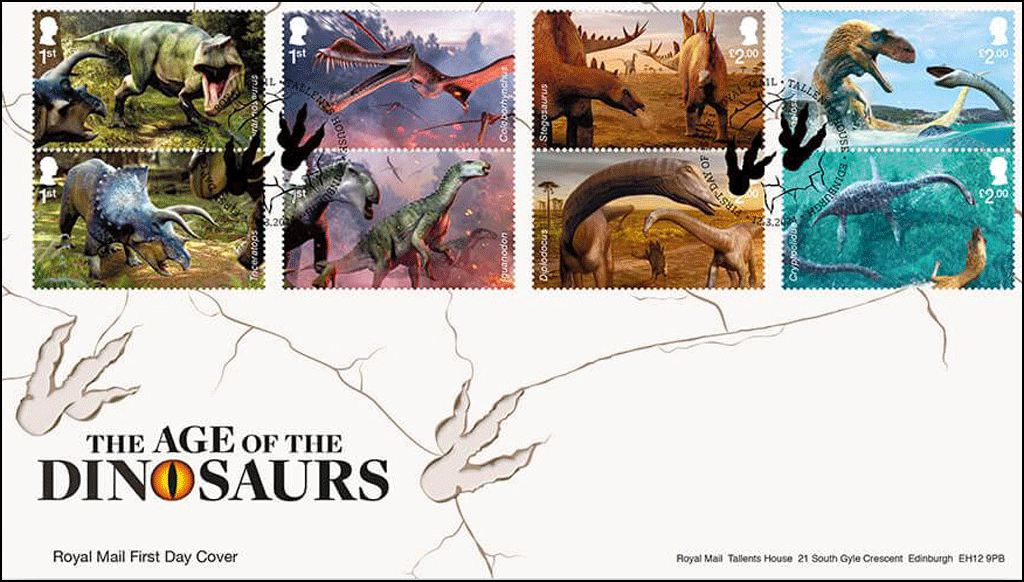 The official first day cover, with either the Tallents House (shown) or Lyme Regis postmarks, is £16.25 (US$20.67).
The official first day cover, with either the Tallents House (shown) or Lyme Regis postmarks, is £16.25 (US$20.67).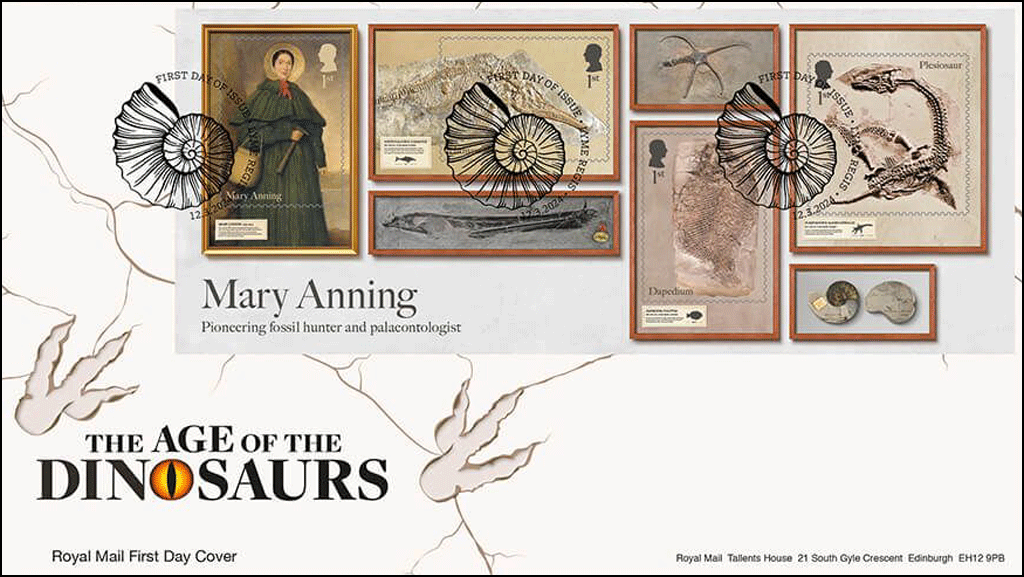 The miniature sheet FDC, with either postmark, is £6.65 (US$8.46)
The miniature sheet FDC, with either postmark, is £6.65 (US$8.46)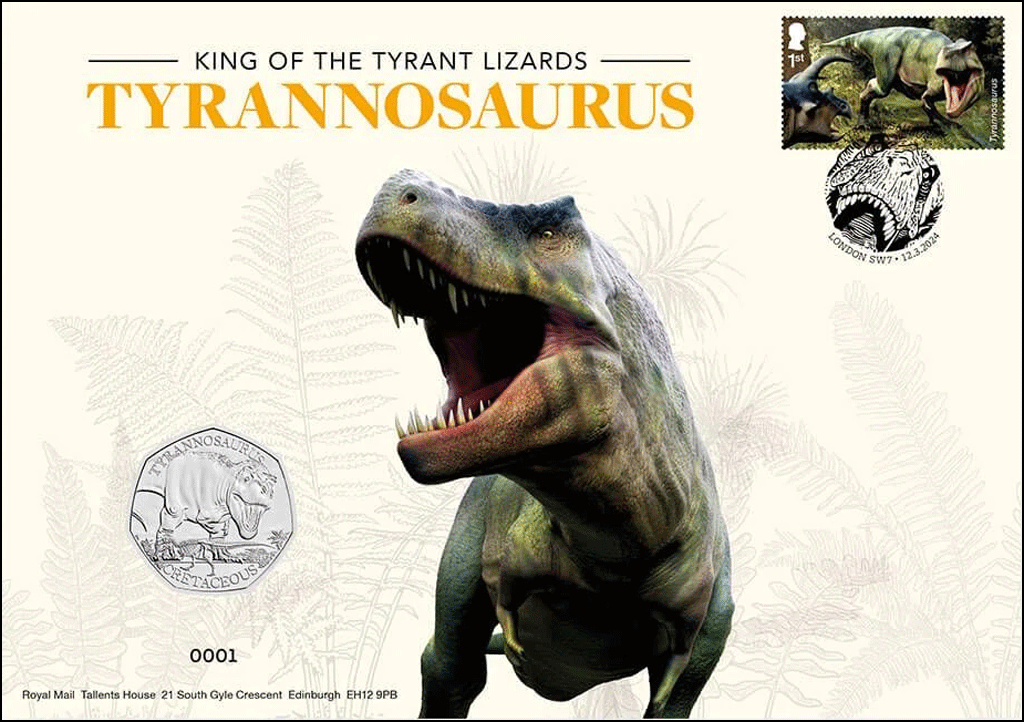 A “coin cover” is £17.50 (US$22.26), but the
A “coin cover” is £17.50 (US$22.26), but the  silver coin cover is £71.00 (US$90.32)
silver coin cover is £71.00 (US$90.32)
A set of 12 postcards is £5.85 (US$7.44), the press sheet of 12 of the souvenir sheet is £60.00 (US$76.32) and there are full- and half-sheets of the Megalosaurus, Stegosaurus, Coloborhynchus and Tyrannosaurus stamps.

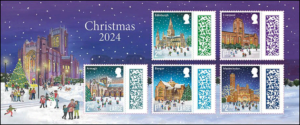 The stamps were illustrated by Penzance-based, British artist, Judy Joel, whose popular paintings have been sold worldwide over the last 50 years. [On the right, the five-stamp souvenir sheet.]
The stamps were illustrated by Penzance-based, British artist, Judy Joel, whose popular paintings have been sold worldwide over the last 50 years. [On the right, the five-stamp souvenir sheet.]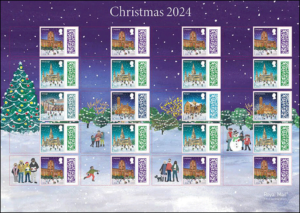 past, cathedrals have provided sanctuary, community, joy and wonder at the birth of Christ. And they continue to do so today, standing at the very heart of our cities. All the UK’s cathedrals will be open over Christmas, ready to welcome people of all faiths and none. For services, prayer and celebration, to find peace, or to enjoy the splendour of their music, architecture and treasures, visit a cathedral this Christmas!” [On the left, the 20-stamp plus labels “collectors sheet.”]
past, cathedrals have provided sanctuary, community, joy and wonder at the birth of Christ. And they continue to do so today, standing at the very heart of our cities. All the UK’s cathedrals will be open over Christmas, ready to welcome people of all faiths and none. For services, prayer and celebration, to find peace, or to enjoy the splendour of their music, architecture and treasures, visit a cathedral this Christmas!” [On the left, the 20-stamp plus labels “collectors sheet.”]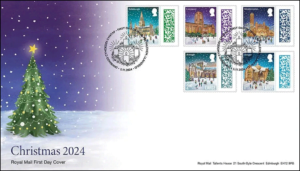 can be especially important at Christmas.” [On the right, one of the official first day covers available from Royal Mail.]
can be especially important at Christmas.” [On the right, one of the official first day covers available from Royal Mail.]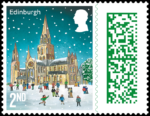 St Mary’s Episcopal Cathedral, designed by Victorian architect George Gilbert Scott, boldly harks back to upwardly soaring medieval Gothic cathedrals, with its three spires dominating Edinburgh. Consecrated in 1879, St Mary’s is the largest cathedral in Scotland today and maintains the tradition of regular choral worship, never more elaborate than at Christmas.
St Mary’s Episcopal Cathedral, designed by Victorian architect George Gilbert Scott, boldly harks back to upwardly soaring medieval Gothic cathedrals, with its three spires dominating Edinburgh. Consecrated in 1879, St Mary’s is the largest cathedral in Scotland today and maintains the tradition of regular choral worship, never more elaborate than at Christmas.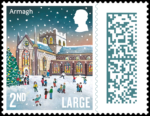 The Church of Ireland Cathedral of St Patrick in Armagh traces its origins to a hilltop sanctuary founded by St Patrick, and worship has taken place on this site since the 5th century. At Christmas, the cathedral’s hallowed walls echo with the sound of carols and all find a warm welcome within.
The Church of Ireland Cathedral of St Patrick in Armagh traces its origins to a hilltop sanctuary founded by St Patrick, and worship has taken place on this site since the 5th century. At Christmas, the cathedral’s hallowed walls echo with the sound of carols and all find a warm welcome within.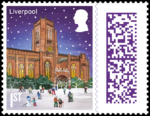 Liverpool acquired an immense new cathedral for the 20th century, designed by the young architect Giles Gilbert Scott. Consecrated in 1924, the cathedral was not completed until 1978. In what is often called the ‘people’s cathedral’, breathtaking heights and a sense of space combine with beautiful craftsmanship.
Liverpool acquired an immense new cathedral for the 20th century, designed by the young architect Giles Gilbert Scott. Consecrated in 1924, the cathedral was not completed until 1978. In what is often called the ‘people’s cathedral’, breathtaking heights and a sense of space combine with beautiful craftsmanship. Bangor Cathedral stands where St Deiniol established his Celtic monastery in the 6th century. Battered by medieval wars between the princes of Gwynedd and the English kings, the cathedral now celebrates the languages, cultures and landscapes of Wales. Every Sunday and on Christmas Day, Welsh and English coexist in worship and prayer.
Bangor Cathedral stands where St Deiniol established his Celtic monastery in the 6th century. Battered by medieval wars between the princes of Gwynedd and the English kings, the cathedral now celebrates the languages, cultures and landscapes of Wales. Every Sunday and on Christmas Day, Welsh and English coexist in worship and prayer. Westminster Cathedral is the largest Roman Catholic church in England and Wales and the seat of the Cardinal Archbishop of Westminster. It was designed by John Francis Bentley in a neo-Byzantine style and built between 1895 and 1903. Candlelit Midnight Mass on Christmas Eve ushers in the celebration of the birth of Christ.
Westminster Cathedral is the largest Roman Catholic church in England and Wales and the seat of the Cardinal Archbishop of Westminster. It was designed by John Francis Bentley in a neo-Byzantine style and built between 1895 and 1903. Candlelit Midnight Mass on Christmas Eve ushers in the celebration of the birth of Christ.
